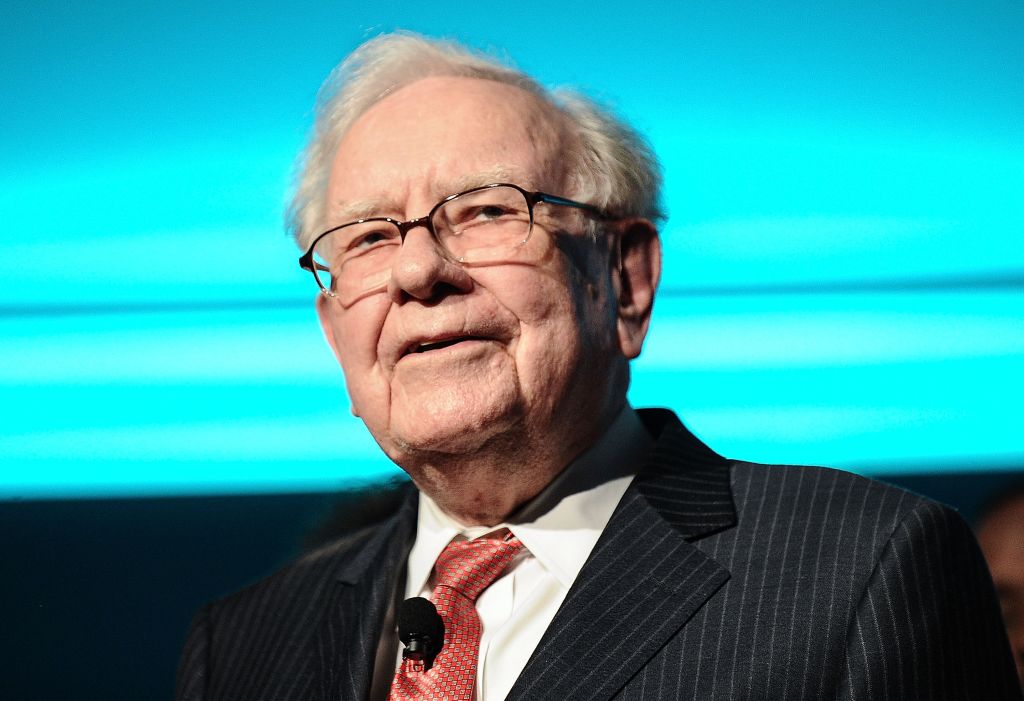Beware the Penny Stock Hype
Don't be swayed by slick ads in national publications touting risky companies.
Maybe you've noticed a new trend in national business magazines and major newspapers: ads for penny stocks. Have these low-priced shares of usually dubious companies finally gone upscale? Well, their marketing has, but otherwise it's still the same hype designed to separate investors from their money.
Traditional penny stock campaigns follow a simple formula. Promoters and insiders use these advertising campaigns to increase the price of stock they own, then often sell shares at pumped-up prices. So even though these ad campaigns can cost hundreds of thousands of dollars and the companies they promote are weak or broke, those behind the hype still can make a killing.
How closely do these high-priced penny stock promotions follow the formula? You be the judge.
From just $107.88 $24.99 for Kiplinger Personal Finance
Become a smarter, better informed investor. Subscribe from just $107.88 $24.99, plus get up to 4 Special Issues

Sign up for Kiplinger’s Free Newsletters
Profit and prosper with the best of expert advice on investing, taxes, retirement, personal finance and more - straight to your e-mail.
Profit and prosper with the best of expert advice - straight to your e-mail.

Consider the stock of Raven Gold. An outfit called the Stock Trend Report placed ads in The New York Times and USA Today in early July that told investors to prepare for the "next gold rush" by buying shares of the company (RVNG.OB). In a veritable media blitz, ads also ran on CNBC in some parts of the country, and glossy mailings were sent to potential investors. The Canadian company says on its Web site and in its press releases that it owns properties in Mexico that are capable of producing gold and silver. That factoid was grist for the promotion campaigns published by the Stock Trend Report.
Those ads push stock in a company that, by its own admission, has no revenue and slim prospects. Since it started in February of 2005 as Riverbank Resources, Raven Gold has lost $212,788, according to Securities and Exchange Commission filings. In its latest quarterly report, filed with the SEC on August 14, the company states that "We have no known mineral resources and if we cannot find any mineral recourses [sic], we may have to cease operations."
Plus, Raven Gold hasn't filed the independent technical reports required by Canadian law when a mining company buys mineral rights material to its finances. The British Columbia Securities Commission suspended the trading of Raven Gold's stock on August 1 because these reports were lacking. However, U.S. investors aren't helped much by the Canadian suspension because the stock is quoted on the U.S.-based OTC Bulletin Board. Repeated calls and e-mails to Raven Gold representatives and the Stock Trend Report were not returned.
The stock, which has a market capitalization (price per share times shares outstanding) of $78 million, is wildly overpriced by any measure. And once the ad campaign slowed down, the stock sagged. The shares, which closed at $1.04 on September 11, have fallen 30% since the ads ran in USA Today on July 9 and The New York Times on July 10.
Tip of the iceberg. Raven Gold is only the poster boy for the "tiny companies, high-priced hype" trend. This first came to our attention in May, when we noticed misleading ads appearing for the stock of a small Chinese cellphone retailer, Guangzhou Global Telecom, in national business magazines, including BusinessWeek, Forbes, Fortune, Money and SmartMoney as well as the Investors Business Daily newspaper.
During the hype campaign, the stock peaked at $2.65 a share on May 31 (the day before we wrote about the scheme) and traded millions of shares daily. The stock closed at 72 cents on September 11.
This advertising trend is a new and improved version of stock-touting ads that flooded print publications during the late 1980s, the heyday of pump-and-dump boiler rooms. That waned after regulators cracked down on unscrupulous brokers in the early 1990s. Penny-stock hucksters then turned to e-mail and Internet message boards.
Why have companies and promoters chosen now to go glossy with penny stock ad campaigns, and what's being done about it? The short answer to those two questions seems to be: because they can get away with it, and not much.
Lax standards. Kiplinger's Personal Finance magazine has refused to run such ads, but the industry standard is lax. The New York Times, for example, says that if a stock is listed and registered with the Securities and Exchange Commission, it will run an ad promoting it. Says Abbe Serphos, spokeswoman for The New York Times. "Since the SEC is the regulatory body that oversees such stocks, we believe that the listing or delisting of these stocks gives us an indication of whether to accept these advertisements."
A reason so many prestigious publications accept such ads may be because times are tough in the publishing business. Maria Terrell, an associate director with the International Newspaper Marketing Association, says this is the first time that newspapers have seen an advertising decline in a growing economy. Members are debating whether to run ads from escort services, makers of herbal products to treat erectile dysfunction and penny-stock promoters that they wouldn't have considered in boom times, she says.
Enforcement challenges. U.S. securities regulators have been mum on the recent boom in mainstream penny-stock promotion. The SEC doesn't comment about companies until the agency has filed complaints against them. Plus, securities-law enforcement takes time. On September 6, the SEC settled a complaint against two Arizona penny-stock traders engaged in a pump-and-dump spam scheme that allegedly netted them $3 million. That case began four years ago.
The current batch of penny-stock hype presents enforcement challenges for the SEC. The ads and mailers walk the line between misleading and fraudulent, which makes them difficult to prosecute, says Pat Huddleston, a former SEC enforcement official who worked on penny-stock scam cases in the 1990s. Huddleston now runs Atlanta-based Investor's Watchdog, a private firm that vets investment opportunities for clients. The fact that penny-stock promoters advertise in major publications is a sign they aren't worried that their campaigns will draw scrutiny from the SEC, says Georgetown University finance professor James Angel.
The SEC needs to step up penny-stock enforcement to stem the tide of fraud, says Cromwell Couslon, chief executive of the Pink Sheets, a private quotation service that lists thousands of penny stocks. "The only organization that can stop trading is a regulator," he says. "We need the regulators to aggressively suspend and it's a role only a regulator can do."
Canada seems to have reined in such promotions. The free-wheeling Vancouver Stock Exchange was long home to many penny stocks that were subject to pump-and-dump schemes. But in the late 1990s, Canadian regulators began requiring executives and promoters of small-company stocks to register their promotional activities and submit to background checks. As a result, Canada eliminated the most egregious hype. But many of those companies and their promoters moved to the U.S.
More hype. And speaking of egregious, take Fox Petroleum of London. The company wants to be a wildcat driller but needs to raise money to explore the properties on which it holds leases. Its stock (FXPE.OB), which is quoted on the OTC BB, traded for $2.50 on September 11.
Fox's stock price had doubled between early July and mid August but had begun to slip. The company bought ads in the September 17 issue of Fortune and the August 27 issue of Barron's, among other publications. The ads describe the potential oil production from leases Fox owns and drop the names of major oil producers, such as BP, Chevron and Exxon Mobil.
But you wouldn't learn from the advertisements that the company lacks any active production sites, has few employees and needs to raise millions before it can start drilling, according to SEC filings. Fox spent $300,000 on advertising in various publications, says Alexander Craven, the company's vice president of finance, treasurer, secretary and one of three full-time employees. "We felt the expenditure was important to promote awareness both for the company and for our investors," Craven says.
One has to wonder why Fox spent thousands on magazine and newspaper advertising for investors to check out a stock when it needs millions for drilling operations. Fox has only $1.7 million of cash on hand, according to its most recent quarterly report filed with the SEC.
In addition to the promotion in the Fox-paid ads, an online publisher, Contrarian Press, began pushing Fox shares on June 11. Contrarian is run by Scott Fraser, who has had a run-in with regulators. The SEC issued a cease-and-desist order in September 2003 claiming that Fraser made false and misleading statements relating to the past performance of stock recommendations in his Natural Contrarian newsletter. But that hasn't stopped Fraser from saying on his network of Web sites that he's "Profit-Proven Master of Contrarian Strategies."
He boasted of his skills in a full-page ad in the September 2007 issue of Kiplinger's Personal Finance -- mea culpa -- as well as in Forbes and Barron's. Editors at Kiplinger's refused to accept a full-page ad in the October issue because it hyped companies with no ongoing businesses or revenues. Fraser wouldn't return calls and e-mails seeking comment, so we don't know his motives for recommending Fox and similar stocks. Craven says Fox executives are not involved with any stock promoters.
Another oil company is following the Fox Petroleum model. Sun Cal Energy is a Canadian company that converted in November 2006 from a mining company with no revenue to an oil business with no revenue. The company had $267,817 in cash on hand as of March 31, according to an SEC filing. Yet it took out an ad in the September 3 issue of Forbes that neglects to mention the company doesn't have any active production sites. The ad only describes the potential profits from unexplored oil and gas leases that Sun Cal owns in Southern California.
George Drazenovic, Sun Cal's chief financial officer, treasurer and secretary (and one of two full-time employees), says that the company has a duty to keep shareholders informed and that 90% of Sun Cal's funds go into developing its leases. But despite what Drazenovic says, Sun Cal hasn't even begun developing those leases, according to its latest SEC filing.
Sun Cal stock (SCEY.OB) could certainly use some help. After trading above $3 a share through mid summer, it plunged steadily during August and closed at $1.26 on September 11, on the OTC BB.
Bottom line: Don't let the prestige of these national publications cause you to suspend disbelief. Before investing in any OTC Bulletin Board stock, go to the SEC's Web site and look at its most recent 10-K annual report and 10-Q quarterly report and closely examine its revenues and assets and disclaimers. That precaution alone could prevent your being sucked into a costly and embarrassing ripoff.
Profit and prosper with the best of Kiplinger's advice on investing, taxes, retirement, personal finance and much more. Delivered daily. Enter your email in the box and click Sign Me Up.
-
 What Science Reveals About Money and a Happy Retirement
What Science Reveals About Money and a Happy RetirementWhether you’re still planning or already retired, these research-based insights point the way to your best post-work life.
-
 7 Retirement Planning Trends: What They Mean for You in 2026
7 Retirement Planning Trends: What They Mean for You in 2026From government shutdowns to market swings, the past 12 months have been nothing if not eventful. The key trends can help you improve your own financial plan.
-
 What Defines Wealth? A Christmas Tale of Legacy vs Possession
What Defines Wealth? A Christmas Tale of Legacy vs PossessionThe tale of Good King Wenceslas shows that true wealth is built through generosity, relationships and the courage to act kindly no matter what.
-
 If You'd Put $1,000 Into Coca-Cola Stock 20 Years Ago, Here's What You'd Have Today
If You'd Put $1,000 Into Coca-Cola Stock 20 Years Ago, Here's What You'd Have TodayEven with its reliable dividend growth and generous stock buybacks, Coca-Cola has underperformed the broad market in the long term.
-
 If You Put $1,000 into Qualcomm Stock 20 Years Ago, Here's What You Would Have Today
If You Put $1,000 into Qualcomm Stock 20 Years Ago, Here's What You Would Have TodayQualcomm stock has been a big disappointment for truly long-term investors.
-
 If You'd Put $1,000 Into Home Depot Stock 20 Years Ago, Here's What You'd Have Today
If You'd Put $1,000 Into Home Depot Stock 20 Years Ago, Here's What You'd Have TodayHome Depot stock has been a buy-and-hold banger for truly long-term investors.
-
 If You'd Put $1,000 Into Bank of America Stock 20 Years Ago, Here's What You'd Have Today
If You'd Put $1,000 Into Bank of America Stock 20 Years Ago, Here's What You'd Have TodayBank of America stock has been a massive buy-and-hold bust.
-

 If You'd Put $1,000 Into Oracle Stock 20 Years Ago, Here's What You'd Have Today
If You'd Put $1,000 Into Oracle Stock 20 Years Ago, Here's What You'd Have TodayORCL Oracle stock has been an outstanding buy-and-hold bet for decades.
-
 If You'd Put $1,000 Into Sherwin-Williams Stock 20 Years Ago, Here's What You'd Have Today
If You'd Put $1,000 Into Sherwin-Williams Stock 20 Years Ago, Here's What You'd Have TodaySherwin-Williams stock has clobbered the broader market by a wide margin for a long time.
-
 If You'd Put $1,000 Into UnitedHealth Group Stock 20 Years Ago, Here's What You'd Have Today
If You'd Put $1,000 Into UnitedHealth Group Stock 20 Years Ago, Here's What You'd Have TodayUNH stock was a massive market beater for ages — until it wasn't.
-
 If You'd Put $1,000 Into Berkshire Hathaway Stock 20 Years Ago, Here's What You'd Have Today
If You'd Put $1,000 Into Berkshire Hathaway Stock 20 Years Ago, Here's What You'd Have TodayBerkshire Hathaway is a long-time market beater, but the easy money in BRK.B has already been made.